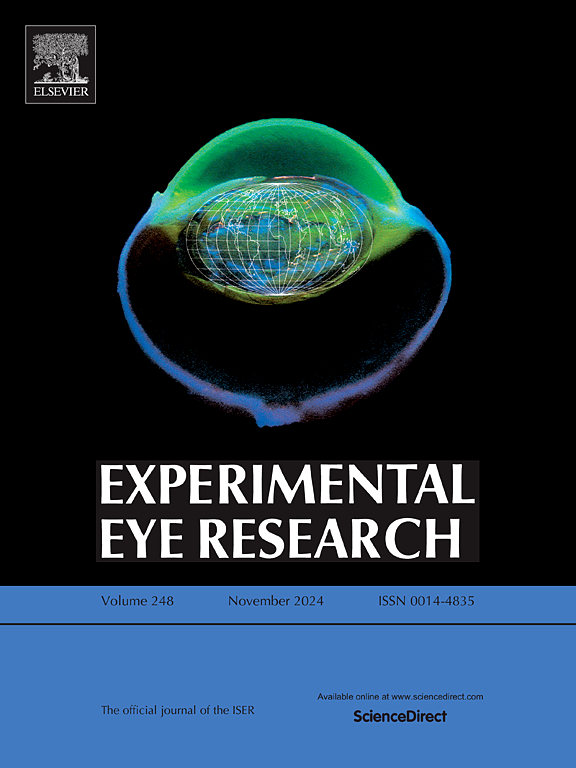Detecting irreversible cone photoreceptors injury caused by whole-body hyperthermia
IF 3
2区 医学
Q1 OPHTHALMOLOGY
引用次数: 0
Abstract
Whole-body hyperthermia (WBH) has been used as an adjunctive strategy for treating malignant and viral diseases. However, WBH can cause toxic reactions in the brain and affect cerebral function. The retina is an extension of the brain. This study concerned about the effects of WBH on murine retinas. Under general anesthesia, the C57BL/6J mice in the WBH group were maintained abdomen-down position on a thermostatic platform, the temperature of which ranged from 40 to 43 °C. Ultimately, murine rectal temperatures reached a recommended high point, approximately 42 °C. However, rectal temperatures of the control mice were maintained within the normal range from 37 to 38 °C. The WBH and sham heating process lasted 2 h. Due to loss of eye blinks during general anesthesia, artificial tears were used to prevent cornea dehydration. 3 days after the WBH, full-field electroretinograms (ERGs) elicited by white-light stimuli showed reduced amplitudes of scotopic and photopic responses. 7 days after the hyperthermia, rod-driven ERG amplitudes were almost normal, but photopic ERG amplitudes were still statistically smaller than the normal values. Under dark adaptation, 35 Hz flicker ERGs confirmed that the change of cone-driven responses is irreversible. Retinal cones of the C57BL/6J mice include middlewave-sensitive (M) and ultraviolet-sensitive (UV) subtypes. Here, both M- and UV-cone ERGs showed abnormally reduced amplitudes at the two time points after the WBH. Further study focused on retinal cone opsins, which are definitive markers of cone subtypes and participate in perception of color light with different wavelengths. Analyzing whole-mounted retinas, the hyperthermia led to lower density (less counts per microscopic field) of M- and UV-cone opsins. The change might imply cone death caused by the WBH. Our study immunohistochemically displayed the hyperthermia-induced retinal injury at the microscope level. There were no abnormal findings in fundus photography and retinal optical coherence tomography imaging. Clinically, measuring cone-driven ERGs is suggested to detect potential retinal neuron injury caused by WBH administration.
求助全文
约1分钟内获得全文
求助全文
来源期刊

Experimental eye research
医学-眼科学
CiteScore
6.80
自引率
5.90%
发文量
323
审稿时长
66 days
期刊介绍:
The primary goal of Experimental Eye Research is to publish original research papers on all aspects of experimental biology of the eye and ocular tissues that seek to define the mechanisms of normal function and/or disease. Studies of ocular tissues that encompass the disciplines of cell biology, developmental biology, genetics, molecular biology, physiology, biochemistry, biophysics, immunology or microbiology are most welcomed. Manuscripts that are purely clinical or in a surgical area of ophthalmology are not appropriate for submission to Experimental Eye Research and if received will be returned without review.
 求助内容:
求助内容: 应助结果提醒方式:
应助结果提醒方式:


